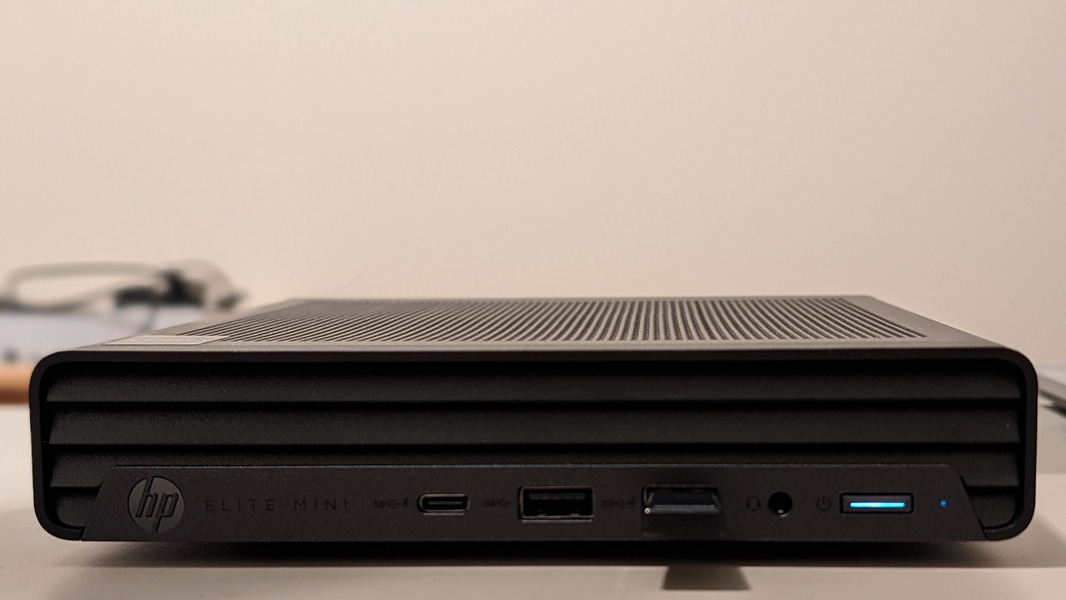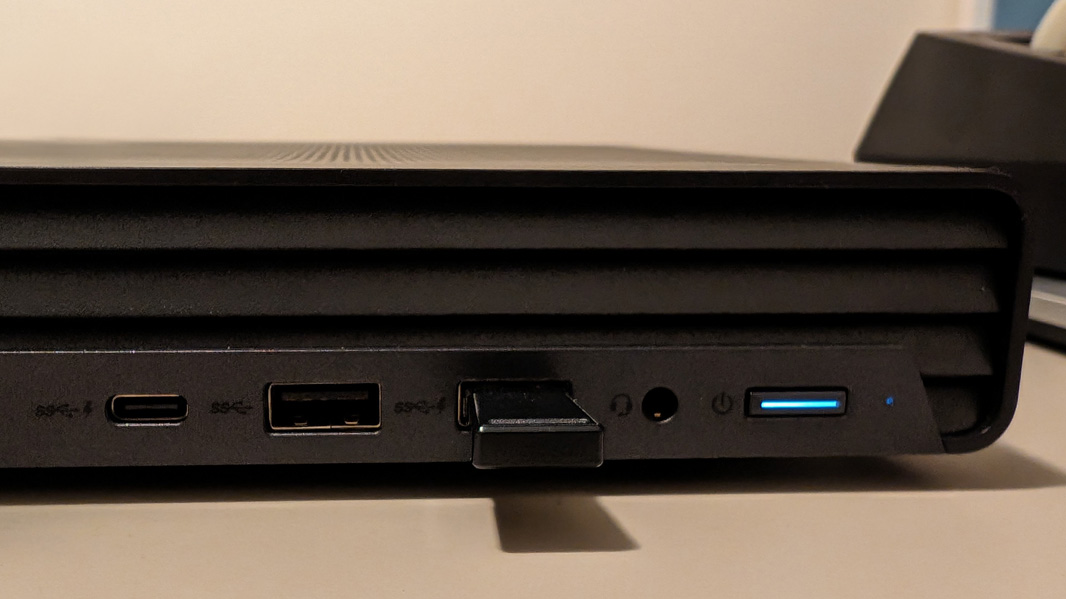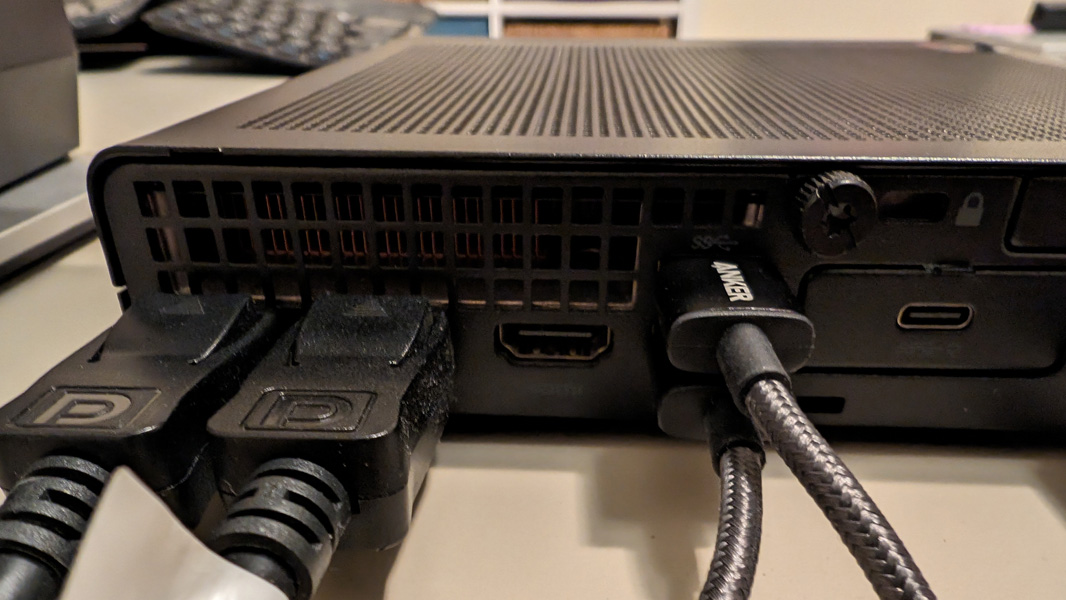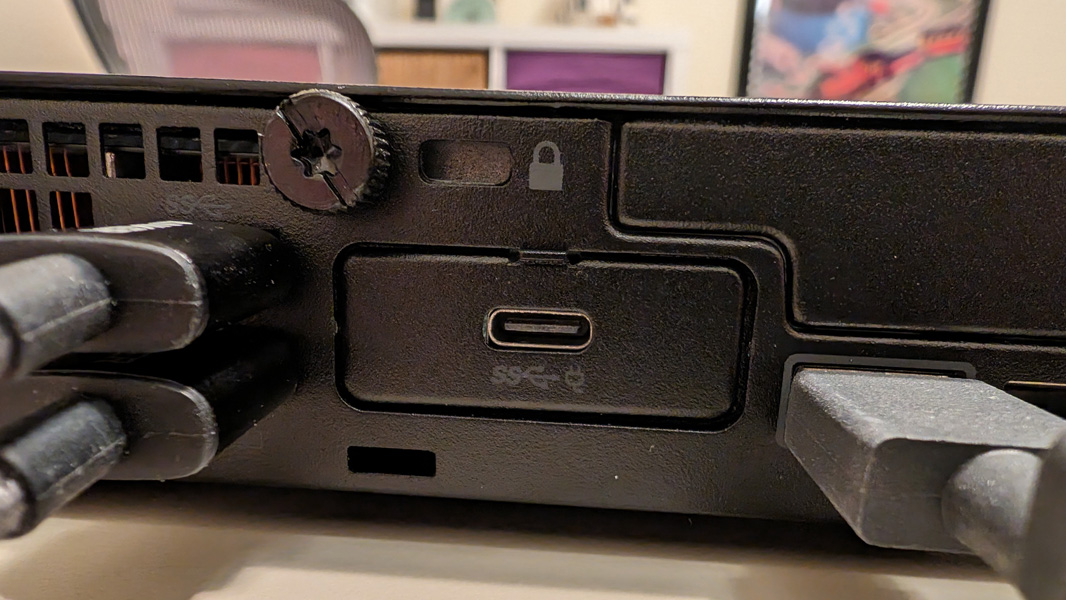HP Elite Mini 800 G9 First Impressions
- Paul Thurrott
- Jan 16, 2024
-
23

I have always had a special place in my heart for small form factor (SFF) PCs, and the HP Elite Mini 800 G9 is a great reminder of why: It provides a happy middle ground between the big, bulky, and intimidating desktop PCs and hard-to-expand portable PCs I normally use, using a design that is small and quiet and provides just the right level of performance and expandability.
Many readers will immediately think of the Intel—now ASUS—line of NUCs, and I’m right there with you. But there’s something to be said for the more traditional SFF PC, as seen with the Acer Veriton Vero Mini I reviewed back in October, the ROG NUC that ASUS just announced, or Apple’s Mac Mini. And the HP Elite Mini 800 G9 falls into that camp: Its tiny form factor resembles a pizza box but at a 25 percent scale.
Windows Intelligence In Your Inbox
Sign up for our new free newsletter to get three time-saving tips each Friday — and get free copies of Paul Thurrott's Windows 11 and Windows 10 Field Guides (normally $9.99) as a special welcome gift!
"*" indicates required fields

Despite this, the mini HP is surprisingly versatile, packing an incredible and useful range of expansion ports and, go figure, two of the HP Flex expansion ports you also find on the PC maker’s larger desktop PCs and workstations so that you can customize it to your specific needs. In many ways, those ports are a game changer. But first things first.
The front of the Elite Mini provides a USB Type-C port (with 20 Gbps of data transfer performance and device charging capabilities), two USB Type-A ports (10 Gbps, one with device fast-charging capabilities), a combo headphone/microphone jack, and the power button.

On the rear, you’ll find a surprisingly complete set of ports: Two Dual-Mode DisplayPort 1.4a (DP++) ports, a full-sized HDMI 2.1 port, three USB Type-A ports (10 Gbps, two of which support wake from S4/S5 sleep states for keyboard/mouse), a Kensington lock slot, two HP Flex ports (one in the center, one in the top right), a 1 Gbps Ethernet port, a proprietary power connector for the bundled 120-watt power supply, a removable cover for the optional Wi-Fi antenna, and a retractable padlock loop.

I know. It almost doesn’t make sense. But back to those HP Flex ports.

On the review unit, the center port has been configured with a USB Type-C port (10 Gbps, DisplayPort Alt Mode, and 100-watt power intake), but it could alternatively be configured with an HDMI 2.1 port, a 1 Gbps Ethernet port, a VGA port, a serial port, a DisplayPort 1.4a port with High Bit Rate 3 (HBR3) capabilities, a Thunderbolt 3/USB 4.0 port, or two USB Type-A ports (5 Gbps).

The upper-right HP Flex port is unused in the review unit. But this could be configured with an NVIDIA GeForce 3050 Ti discrete GPU, a serial port, two USB Type-A (480 Mbps) ports, or a second external Wi-Fi antenna. Incredible.
As you may recall, the Acer Veriton Vero had an unusual T-series Intel processor, a 35-watt, 6-core Intel Core i5-1240T processor with Intel UHD 730 integrated graphics, that I had never seen before. The T-series is aimed at SFF PCs and offers a performance and fan noise middle ground between traditional mobile and desktop microprocessors. So it is perhaps not surprising that the HP Elite Mini can be configured with similar T-series processors—indeed, there are 12th and 13th Gen versions on offer—but it can also be configured with more traditional 65-watt Core i3, i5, and i7 processors (again, both 12th and 13th Gen).

The review unit includes a 13th Gen Intel Core i5-13500 processor—a 65-watt desktop chipset with 6 performance cores and 8 efficient cores—with Intel UHD Graphics 770, so it’s a step up from the T-series versions, but nothing earth-shattering. But it’s also a nice step up from the U-series chipset you used to find in the standard Intel NUC models.
The HP Elite also supports 8 GB to 64 GB of DDR5-4800 RAM via two SODIMM slots, and a wide range of storage options thanks to its two M.2 internal slots (256 GB, 512 GB, 1 TB, or 2 TB of PCIe NVMe SSD each, some with additional performance specifications). The review unit arrived with 32 GB of RAM and 512 GB of storage. But you can also add a SATA drive bracket and a 1 TB 2.5-inch SATA HDD if that’s not enough storage expansion. My God, HP.

From a daily perspective, I’ve had no performance issues sticking mostly to my traditional productivity workload, and the fan noise has never gotten obnoxious (and is not noticeable over the sound of my NAS, which is constantly spinning its two HDDs.) And I’m really using it: In addition to my Microsoft Sculpt Ergonomic keyboard and mouse, I’ve connected two 1440p displays (both via DisplayPort), a 4K webcam, a Focusrite USB interface for the podcasting microphone, plus a USB interface out to the main display, which has an integrated USB hub.

You can get a keyboard and a mouse, of course, an optional vertical stand, and a variety of Wi-Fi 6E/Bluetooth 5.3 configurations, some with an external antenna. I don’t have the antenna, but I’ve been using it on my home network both wired and wirelessly without any issues (granted, mostly in the room with the router). The HP can be configured with Windows 10 Pro, Windows 11 Home, or Windows 11 Pro, the latter of which came in the review unit. (You can also get FreeDOS and skip paying for Windows, interestingly.) And the software preload is reasonable, with no real crapware to speak of, 8 HP utilities, and three Intel utilities.
Pricing starts at about $1350 for a stripper model with a Core i3 processor, 8 GB of RAM, a 256 GB value SSD, no Flex port expansion, no keyboard or mouse, a 90-watt power supply, and no Windows. That seems a bit high to me, as does the review unit’s price, $2125. But remember the expansion capabilities here: This is a true desktop PC, and it should be quite future-proof assuming you start with a capable base configuration.
Interesting stuff. I’ll use it every day for the next month or so and then report back.